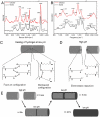Rapid self-healing hydrogels
- PMID: 22392977
- PMCID: PMC3311386
- DOI: 10.1073/pnas.1201122109
Rapid self-healing hydrogels
Abstract
Synthetic materials that are capable of autonomous healing upon damage are being developed at a rapid pace because of their many potential applications. Despite these advancements, achieving self-healing in permanently cross-linked hydrogels has remained elusive because of the presence of water and irreversible cross-links. Here, we demonstrate that permanently cross-linked hydrogels can be engineered to exhibit self-healing in an aqueous environment. We achieve this feature by arming the hydrogel network with flexible-pendant side chains carrying an optimal balance of hydrophilic and hydrophobic moieties that allows the side chains to mediate hydrogen bonds across the hydrogel interfaces with minimal steric hindrance and hydrophobic collapse. The self-healing reported here is rapid, occurring within seconds of the insertion of a crack into the hydrogel or juxtaposition of two separate hydrogel pieces. The healing is reversible and can be switched on and off via changes in pH, allowing external control over the healing process. Moreover, the hydrogels can sustain multiple cycles of healing and separation without compromising their mechanical properties and healing kinetics. Beyond revealing how secondary interactions could be harnessed to introduce new functions to chemically cross-linked polymeric systems, we also demonstrate various potential applications of such easy-to-synthesize, smart, self-healing hydrogels.
Conflict of interest statement
The authors declare no conflict of interest.
Figures





References
-
- Varghese S, Lele AK, Mashelkar RA. Designing new thermoreversible gels by molecular tailoring of hydrophilic-hydrophobic interactions. J Chem Phys. 2000;112:3063–3070.
-
- Varghese S, Lele AK, Srinivas D, Sastry M, Mashelkar RA. Novel macroscopic self-organization in polymer gels. Adv Mater. 2001;13:1544–1548.
-
- Varghese S, Lele AK, Mashelkar R. Metal-ion-medaited healing of gels. J Polym Sci A1. 2006;44:666–670.
-
- Wojtecki RJ, Meador MA, Rowan SJ. Using the dynamic bond to access macroscopically responsive structurally dynamic polymers. Nat Mater. 2011;10:14–27. - PubMed
-
- Hager MD, Greil P, Leyens C, van der Zwaag S, Schubert US. Self-healing materials. Adv Mater. 2010;22:5424–5430. - PubMed
Publication types
MeSH terms
Substances
LinkOut - more resources
Full Text Sources
Other Literature Sources

